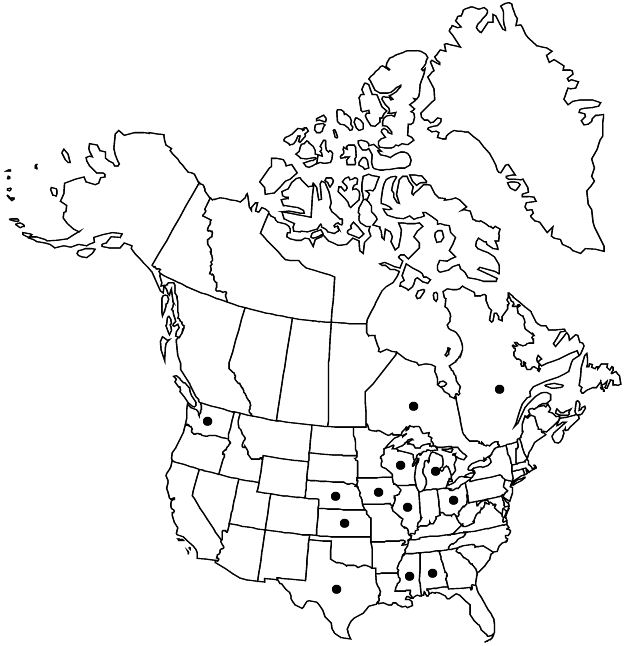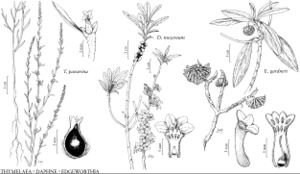Difference between revisions of "Thymelaea passerina"
Syn. Anal. Fl. Paris ed. 2, 360. 1859.
FNA>Volume Importer |
FNA>Volume Importer |
(No difference)
| |
Revision as of 20:16, 24 September 2019
Stems green or yellow-green, turning red in fall. Leaves upright; petiole to 1 mm; blade 0.6–1.5 × 0.1–0.2 cm, stiff, herbaceous to coriaceous, apex acute. Inflorescences cymose, 1–7-flowered; bracts 1.5 cm, with tuft of white trichomes at base. Flowers: hypanthium green to yellow, tubular, becoming urceolate, 2–3 mm, appressed-hairy; calyx lobes minute; stamens: distal whorl inserted at throat; distal anthers subexserted; ovary 0.75 mm, apex hairy; style 0.7–0.8 mm, glabrous, becoming ± eccentric in fruit; stigma exserted. Capsules pyriform. 2n = 18.
Phenology: Flowering summer (late Jun–Aug); fruiting summer–fall (Jul–early Sep).
Habitat: Dry, disturbed ground, including prairies and old fields
Elevation: 10–300 m
Distribution

Ont., Que., Ala., Ill., Iowa, Kans., Mich., Miss., Nebr., Ohio, Tex., Wash., Wis., s Europe, Mediterranean regions.
Discussion
Thymelaea passerina is sometimes accidentally introduced in fodder and spreads quickly. It is sometimes mistaken for one of the delicate species of Polygala.
Selected References
None.
